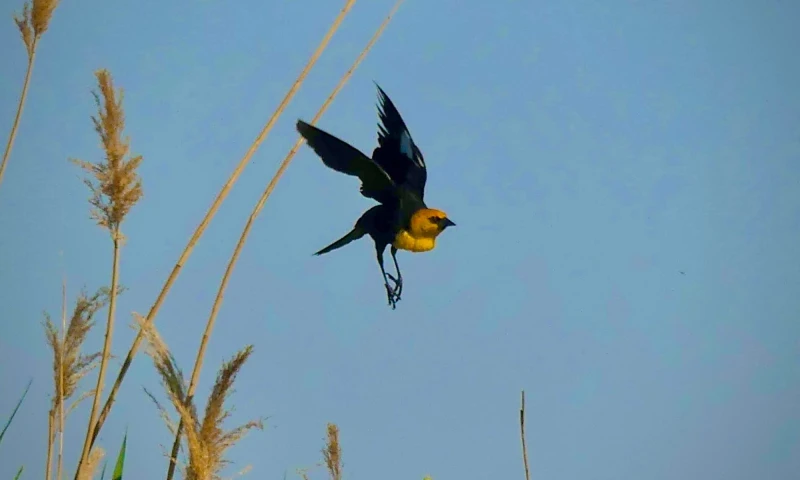By Alex Harper
The big pulses of migratory birds have all but ended for the spring season by the beginning of June. The transient shorebirds, vireos, flycatchers, thrushes, warblers, tanagers, grosbeaks and buntings have pushed through the Mojave landscapes along their route to their summer breeding territories. Most of the birds that we were seeing in May may well have flown to suitable breeding habitat, found a mate, begun maintaining and defending territory, constructed a nest and started sitting on eggs by early June. In the spring, birds are fixated on getting to a territory and passing their genes successfully. This requires focus to get ahead of any competition.
For birders in the Mojave Desert, June is the beginning of the summer. Those who dedicated to looking for straggling or wayward migratory birds should head to the migrant traps in the area. Migrant traps are any features in the landscape that look appealing to birds. In the desert, a migrant trap may be a small area with trees and water; golf courses, highway rest stops, and springs often qualify as traps because they “pull in birds” like moths to a flame. Corn Creek Field Station at Desert National Wildlife Refuge or Floyd Lamb Park are traps that have the potential to attract late or wayward migratory birds. Unassuming highway towns like Primm or Cactus Springs can act as traps as well. In early June, one could be rewarded with a vagrant; Tropical Kingbird, Red-eyed Vireo, or an eastern warbler are all possibilities in June.
Our local birds are deeply engaged in breeding activities. In the lower elevations and the Las Vegas Valley, adults may be feeding nestlings or attending to birds that have fledged the nest. Some birds may begin tending to a second clutch of young. Listen for nestlings begging for food from nests or for fledged young following their parents for handouts. By the end of the month and into July, some birds born this spring are already wandering around on their own, unattended by their parents.
In the higher elevations where cooler temperatures may be lingering, birds are following a later schedule. This means that visitors to the Spring Mountains might be able to enjoy the frenzies of breeding activities of Violet-green Swallows, Broad-tailed Hummingbirds, and songbirds while enjoying cooler weather and the shade of towering Ponderosa Pines. If possible, visit the trails of Fletcher Canyon, Deer Creek, Mary Jane Falls, or upper Lee Canyon on weekday mornings to beat the weekend crowds and take in the June dawn chorus. Those hanging around until nightfall may hear whistling Poorwills, Western Screech-Owl or the low hoots of Flammulated Owls. The Hualapai Mountains near Kingman, Arizona offers mountainous getaways along with chances for Zone-tailed Hawk, Painted Redstart, Hepatic Tanager and Canyon Towhee, all of which are difficult to find on our side of the Colorado River.
Otherwise, settle into a Mojave Desert summer. Treat June, July, and August as times to observe young birds or for studying familiar backyard birds. After a few weeks, shorebirds will be on their way southward; it is possible to see migratory shorebirds by late July and August. You may also find companions in insects, spiders, bats and lizards. Slow down and be open to the other animals and you will notice the diversity of pollinating insects and urban invertebrates of southern Nevada. These invertebrates provide food to the summer biomass of the bird populations.










